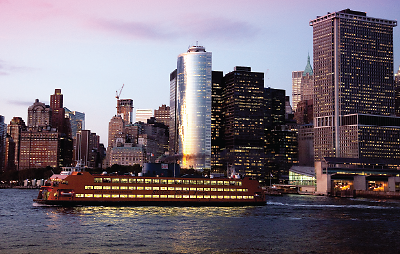Sure, New York is an expensive city, but you don’t have to look far to find plenty of things to do for free.
To start with, there’s New York’s bucolic crown jewel, Central Park, comprising over 136 acres of woodland, 250 acres of lawns, and 150 acres of lakes and ponds. But there are many other green spaces all over the city, including Brooklyn’s Prospect Park and Van Cortlandt Park in the Bronx.
A number of historic sites and museums are always free. To select a few at random:
The African Burial Ground National Monument in lower Manhattan is where hundreds of Africans were buried in the 17th and 18th centuries. The 6.6-acre site was revealed during the construction of an office building in the 1990s.
Federal Hall, on Wall Street, served as the first U.S. capitol building, the site of George Washington’s first inauguration, and the place where the Bill of Rights was officially passed. The original is gone, and the current structure was built in 1842 as the U.S. Customs House. Free tours are offered.
Another founding father, Alexander Hamilton, built his estate at the other end of Manhattan, in Harlem. The Hamilton Grange is now nestled in St. Nicholas Park.
A sobering reminder of the origins of one of the city’s best-known immigrant groups is the Irish Hunger Memorial, an outdoor commemoration of the Emerald Isle’s great famine of 1845-1852, when more than 1.5 million people died. Inside the garden, near Battery Park at Manhattan’s southern tip, there are more than 60 types of flora from Ireland and a recreated 19th-century Irish cottage.
Then there are the places that are free on the right day, at the right time. For instance, on Fridays from 4 p.m. to 8 p.m., the world-renowned Museum of Modern Art flings open its doors to all who choose to enter.
On Saturday, head for the Brooklyn Botanic Garden and the Jewish Museum.
Many other museums and cultural sites are open on a “pay-what-you-will” basis, leaving it up to the visitor to decide on the price of admission.
Free Tours by Foot provides walking tours that give an intimate view of lower Manhattan, Greenwich Village, SoHo, Chinatown, Harlem, and many other storied locales. Their tours are officially free, but guests are invited to offer a name-your-own-price donation to the guides, who style themselves as a cross between professors and performers.
Of course, if you’ve always dreamed of going to New York and being on television, here’s your chance—if you’re lucky. Most shows have online ticket-request systems, but some also may offer walk-up seating. Check show websites well in advance. Shows also may have specific age, dress, or ID requirements. (See box for some choices.)
Perhaps the biggest bang for your non-buck is one you can share with 60,000 people every day: the Staten Island Ferry. The five-mile ride across New York Harbor not only takes passengers to and from its namesake borough, but provides unparalleled views of the Lower Manhattan cityscape, Ellis Island, and the Statue of Liberty. One of the fleets’ five ferryboats leaves port about every half hour during most of the day, but departure intervals shrink to 15 or 20 minutes during rush hours. Go around sunset for a scene you will remember long after you leave New York.
Incidentally, Staten Island is more than the St. George ferry terminal. Visitors can explore the island by foot, bus, or rail to visit myriad ethnic restaurants and sites like the Snug Harbor Cultural Center and Botanical Garden, home to 23 historical buildings, nine botanical gardens, and 10 acres of wetlands. ■


